In the modern technological environment, efficiency is key, and finding easy solutions to connect and power your devices is vital. This is where the 4-Port PoE (Power over Ethernet) Switch comes in – a streamlined device that strategically simplifies network infrastructure while ensuring dependable power supply to the connected devices. This adaptable switch effortlessly improves network capabilities, whether you’re managing a small office, setting up a security surveillance system, or managing IoT devices. In this article, we will explore the important features and advantages of a 4-Port PoE Switch, how it optimizes your setup, and why it is a valuable resource for companies striving to enhance their connectivity. Keep reading to discover the potential of this advanced networking system.
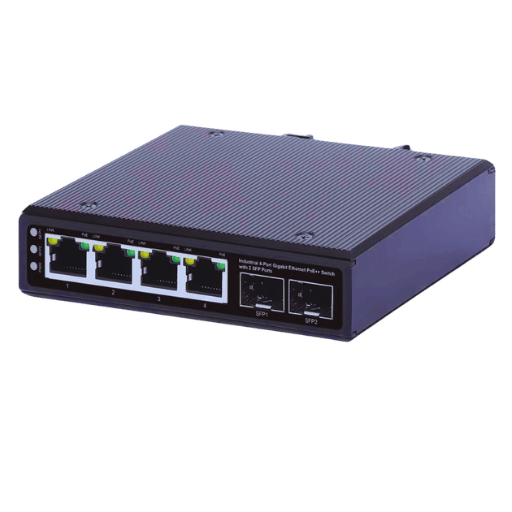
The 4-Port PoE (Power over Ethernet) Switch is an exceptional networking device that combines both data transfer and power delivery through a singular Ethernet cable for four connected devices. This device eliminates the need for additional power sources, making it ideal for IP cameras, VoIP phones, and wireless access points. This device aids in streamlining network setups. The switch provides data packets alongside electrical power through its customary Ethernet ports as per PoE standards, thus guaranteeing powered device compatibility. Moreover, the device’s functionality, coupled with its compact design, allows it to fit within medium-sized network installations.
Power over Ethernet (PoE) enables the transmission of power and data through a single Ethernet cable, facilitating in IP cameras, VoIP phones, and wireless access points. This technology adheres to numerous protocols such as IEEE 802.3af/at/bt, ensuring dependability and compatibility for diverse devices. The streamlined network architectures achievable through PoE switches or injectors greatly assist businesses in managing their infrastructure. Devices connected through PoE do not require additional electrical sockets. This significantly helps reduce expenses while making installation easier.
High-Speed Data Connections
A 4-Port Gigabit Switch is capable of delivering Ethernet speeds of 1 Gbps, each port individually, yielding smooth data transfer with minimal lag for high bandwidth requirements of demanding applications and processes. Every port is configured to support auto-negotiation, which determines the best speed and efficiency of operation for the peripherals.
Power over Ethernet (PoE) Capabilities
A good number of 4-Port Gigabit Switches contain PoE features that enable power and data transfer using a single Ethernet connection. This ability makes it possible to avoid the additional power adapters and greatly improves the ease of deployment of IP Devices such as cameras, access points, and VoIP phones. Those models with PoE+ (IEEE 802.3at) enabled can provide up to 30W of power per port which are suitable for devices that need more power.
Configurable Plug and Play Options
The units are designed so that no complicated configuration is needed which makes deployment easier and faster. They identify capable devices, port speed, and cable type, making these switches ideal for home networks or small business setups.
VLAN and QoS Features
Most Sophisticated Advanced 4-Port Gigabit Switch may offer functionality for Virtual Local Area Networks (VLANs) to better manage traffic and isolate areas to improve security. In addition, Quality of Service (QoS) enhances traffic flow for applications that are sensitive to delays such as video calls or streaming video content.
Energy Saving Features
802.3az energy-saving technologies are integrated into several devices. These technologies automatically adjust energy output based on network activity. This helps reduce power consumption and operating costs while also minimizing the environmental footprint.
Durability and Adaptability
The equipment has powerful hardware that enables the operation of 4-Port Gigabit Switches around the clock. They are adaptable to numerous Ethernet-based peripherals and accept standardized connections for unhindered addition to existing networks.
Enhanced Functionality
Certain models guarantee over 8 Gbps combined switching capacity. This ensures sufficient bandwidth for simultaneous full-duplex communication at all ports. This capability is essential to avoid traffic congestion in high data volume network settings.
Insgesamt a 4-Port Gigabit Switch offers efficient, dependable, and modular network connectivity because of these features and is optimal for professional and casual use.
By enabling both data transmission and electrical power delivery through a single Ethernet cable, Power over Ethernet (PoE) switches simplify network infrastructure. The dual functionality of PoE eliminates the need for separate power sources or cords for devices like IP cameras, VoIP, Wireless Acess Points, reducing costs and installation complexity.
Another major benefit is the flexible placement of devices. Since power outlets are not required, the device can be mounted to walls, ceilings, or hard-to-reach places, enabling maximal performance. PoE switches are essential in large, complex IoT systems, as well as scalable device ecosystems such as smart offices and hospitals.
Modern switches that support IEEE standards 802.3af, 802.3at (PoE+), and 802.3bt (PoE++) can deliver up to 90 watts per port, enhancing capacity for power-hungry devices. PoE-powered LED light systems and advanced surveillance cameras powered by PoE greatly benefit from these enhanced capacities. In addition, many switches are equipped with advanced power management features, allowing prioritization and distribution based on connection needs.
Statistical evidence shows the increasing acceptance of PoE technology in business networks. As stated in the industry report, the global PoE market is expected to increase with a CAGR of more than 12% between 2023 and 2030, indicating the growing need for unified and economical networking systems. The integration of data and power delivery continues to make PoE switches a linchpin in the simplification and modern advancement of complex network architectures and setups.
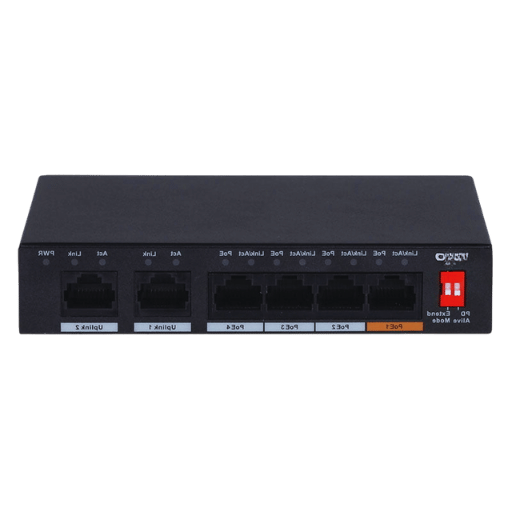
Faster Transfer of Data
With the shift to Gigabit Ethernet, data transfer reaches an upper limit of 1,000 Mbps (1 Gbps), which is a substantial improvement compared to the earlier Fast Ethernet data transfer rate of 100 Mbps. This improvement will ensure smooth functionality for applications that require high bandwidth, like video conferencing, cloud computing, and large file transfers.
Scope of the Network
Gigabit Ethernet caters to the continually increasing need for improved performance metrics of modern enterprise systems in a growing network. It is capable of accommodating additional devices and increased data loads while maintaining the same efficiency and speed of the network.
Greater Stability
Erroneous data transmission is minimized and optimal stability is achieved due to advanced error detection and correction features integrated into the Gigabit Ethernet networks. This form of reliability is essential to systems and applications that are critical and have mission-critical uptime requirements.
Profitability Perspective
Investment in networking hardware has led to a decrease in production costs, translating to lowered prices for the Ethernet equipment without compromising quality. Such developments make it easier for businesses to upgrade their technological framework without facing significant costs, making it the preferred option.
Enhanced Data Traffic for Multimedia Functions
To receive optimal output, video streaming and voice over IP (VoIP) applications require strong network performance, which is less susceptible to delay, ensuring uninterrupted data flow. These are functionalities where Gigabit Ethernet truly shines due to its high bandwidth and minimal latency.
Integration with the Current Framework
As with all Ethernet standards, Gigabit Ethernet is backward compatible, which makes integration with existing network devices seamless. This ensures that organizations can adopt Gigabit speeds without completely overhauling their infrastructure.
Support For Other Networking Capabilities
VLANs, or Virtual Local Area Networks, as well as Gigabit Ethernet quality of service, link aggregation, and other advanced features, are often supported on upper-level Ethernet networks. These capabilities provide better control to the network, increase priority for important traffic, and improve overall network efficiency.
With these characteristics, Gigabit Ethernet serves as a high-quality, flexible solution that meets the needs of most modern or future enterprises.
For your networking infrastructure, selecting network switches requires knowing whether you need managed or unmanaged switches.
Managed Switches
Any form of customization or control over a device is always considered a managed one. There are advanced settings like VLAN configuration, QoS, monitoring of network performance, and remote troubleshooting. Enhanced Control provides managed switches with command-line interfaces (CLI) or web-based graphical user interfaces (GUIs). These switches also allow precise monitoring of relevant performance parameters, which helps the network admins to adjust and improve the overall performance of the network. Managed ones, though more expensive, suit medium to large networks and critical systems where accuracy and dependability are absolute essentials.
Unmanaged Switches
On the other hand, unmanaged switches are simple devices that are meant to be plugged in and used right away, as they require no setup or configuration. They are used in smaller networks or settings where sophisticated control isn’t needed. They operate automatically and do not require active control from users, making them suited for home networks, small offices, or ad hoc arrangements.
Key Differences at a Glance
|
Feature |
Managed Switches |
Unmanaged Switches |
|---|---|---|
|
Configuration Options |
Extensive (VLAN, QoS, etc.) |
None |
|
Security |
Advanced (ACLs, encrypted management) |
Basic |
|
Scalability |
High, suitable for large networks |
Limited, best for small setups |
|
Cost |
Higher |
Lower |
Organizations with complex networking requirements often benefit from managed switches due to their increased flexibility, scalability, and security controls. Unmanaged switches are a cost-effective solution for simple networks where these advanced features are unnecessary. Understanding your specific network demands will ensure the best switch selection for optimal performance and value.
Unmanaged 4-port network switches serve as a suitable and economical choice for home offices or small business setups since they are catering to low device connectivity needs. This option uniquely gives the bare minimum needed to control and direct network traffic without overly straining finances. As per industry forecasts, these unmanaged 4-port switches are easily found in the 20 to 50 dollar range, which is low cost for simple environments.
Managed 4-port switches, on the other hand, start at around $100 and may rise with more advanced options like VLAN configuration, QoS, and increased security measures. These are built for more demanding situations where the network management requirements, such as remote access or segmented networks, are stringent.
In terms of eco-friendliness, 4-port switches are passive devices from which electricity costs can easily be saved. Most run on less than 10 watts during everyday tasks and remote controlled energy saving measures are becoming common among forward looking designs.
To summarize, one of the useful features of 4-port switches is the ease of handling needed by less demanding systems. One of the best parts of having this kind of switch is its balance of cost, functionality, energy savings, and reliable performance and value.
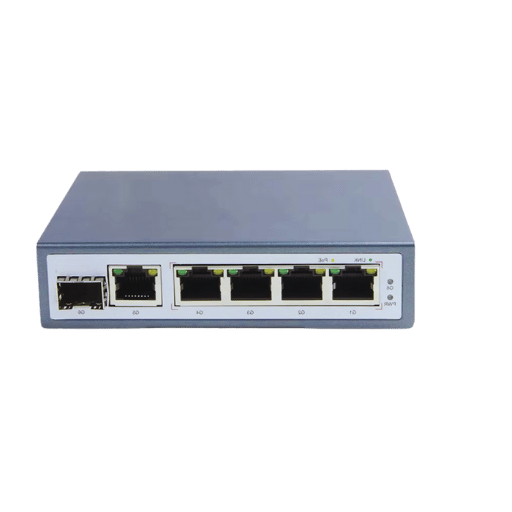
Unpacking and Inspecting the Equipment
Carefully remove the 4-port PoE switches from the packaging. Perform a check for any physical damages and confirm that all components, including the power adapter and user manual, are present. Confirm that the model specifications align with your network requirements.
Power Connections
Connect the power adapter to an appropriate socket outlet and the other end to the PoE switch’s power port. The specification details printed in the document from the vendor must match the voltage output of the power supply.
Locating PoE and Non-PoE Ports
Various ports of the 4-port PoE switch will have designated PoE ports that are sometimes referred to as PoE ports with IP capabilities. These ports will power devices such as IP cameras or VoIP telephones. Users may check switches’ labels or user guides, which are provided as part of the installation documents for the device’s peripherals.
Connecting Powered Devices (PDs)
Use quality Ethernet cables (Cat 5e or better) to plug in powered devices like access points, IP cameras, and VoIP-enabled telephones to the PoE ports. Ensure the devices plugged in do not exceed the power allocation of the switch, which is common in the switch’s specifications presented as total wattage cap.
Connecting to the Upstream Network
Identify the uplink port on the switch, which is usually labeled differently from the PoE ports. With an Ethernet cable, connect this port to your router or the main network switch while ensuring the data flow for the network is intact.
Power On the Switch and Conduct Initial Assessments
Switch on the device, confirm that the power LED light is illuminated, check that the switch indicator lights are also on, showing active engagement with other devices. If the switch contains PoE specific ports, check that the statuses PoE are operational for the devices plugged in.
Adjust the Switch Settings (If Required)
Some 4-port PoE switches have additional configuration options available through a browser. If this applies to your model, visit the IP address provided in the manual along with the changes needed from it based login given in the manual, and make alterations as per requirements such as VLANs, QoS, and power priorities per port preferentially.
Cables should be Managed Appropriately
To make sure the installation looks appealing, all cables need to be tidy and arranged using a cable organizer. Make certain that air can circulate freely around the switch to avoid overheating.
Track Energy Use and Evaluate Network Efficiency
Conduct regular assessments of a switch’s resource utilization, especially for multi-device setups, to ensure the power budget is respected. Most managed switches offer metrics to track usage, which can identify problems such as power wasting or dropped packet incidents.
Final Validation
Verify functionality of all endpoints, which include powering on, signing into the network, and transferring data at the expected bandwidth. Validate that the designated setup fulfills the operational requirements, and adjust if discrepancies are noted.
Adhering to this comprehensive guide will assist in confident 4-port PoE switch configurations while providing streamlined network topology, organized environment, and high reliability for agile network access.
For optimal performance on port settings, begin by logging into the switch’s management interface, which can usually be done through a web browser or a network management application. Determine device identifications and their respective bandwidth and power necessities. Modify the following primary settings accordingly:
Port Speed and Duplex
Set each port to the speed and duplex mode of the device corresponding (for example, 100 Mbps Full Duplex). In case of confusion, the best practice is to turn on auto-negotiation.
Power Allocated (PoE)
Establish the maximum power cap as required on each PoE port based on Power over Ethernet (PoE) settings specific to the device being connected, while controlling the total power budget for balanced allocation.
Quality of Service (QoS)
Schedule QoS policies and critical device prioritization to deliver an optimal level of defined service to each device or application, guaranteeing performance consistency, especially for sensitive operations like latency, VoIP, and Video conferencing.
VLAN Configuration
Assign ports to Virtual LANs (VLANs) as necessary to the network structure design for performance enhancement and robust security.
These key port optimizations will enhance reliability, operational efficiency, and network scalability.
While addressing a specific issue with PoE (Power over Ethernet), I pay close attention to the configuration of the power source and the switch, ensuring that the correct wattage is being provided. I verify whether the powered devices are compatible with the PoE standard in use, which may be 802.3af or 802.3at, since mismatches can result in power problems. After that, I check the HE cabling for compliance or damage. For optimal performance, the cabling should be Cat5e or higher. If there are no defects, I check if the switch’s power budget is fully utilized; if it is not, I look for firmware updates that address known issues. Following this heuristic method enables me to effectively address and fix problems related to PoE.
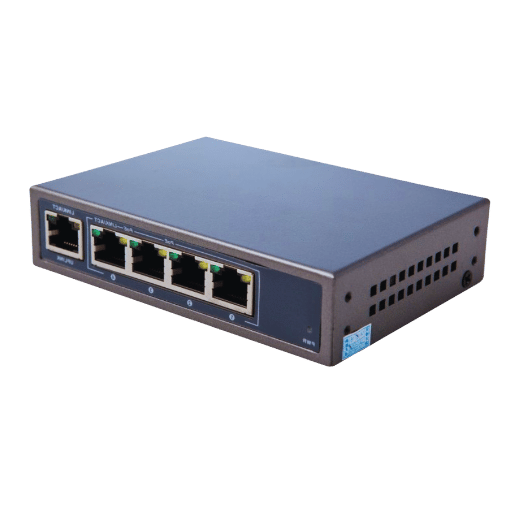
Power over Ethernet (PoE) technology is particularly helpful in network installations, including IP cameras and Access Points (APs), as it simplifies the processes involved. By daisy-chaining devices and transmitting power through an Ethernet cable, PoE reduces the number of extra power outlets required.
IP Cameras
The strength of PoE technology is evident in its use on IP camera installations, allowing users to place cameras anywhere without worrying about power sources. Modern models of PoE switches, like the 4-port version, can power several cameras given their overall wattage. For example, a dome or bullet IP camera averages between four (4) to ten (10) watts, while more advanced models with PTZ (pan, tilt, zoom) capabilities or night vision IR (infrared) LEDs can exceed twenty (20) watts. The 4-port PoE switch with 183 IEEE 802.3at provides a maximum of thirty (30) watts per port, which suffices for the majority of IP camera deployments, particularly small and medium offices or home installations.
Wireless Access Points
Power over Ethernet (PoE) allows greater flexibility for Wireless Access Point (WAP) placement since they can be mounted on ceilings or walls where electrical outlets are not located. Modern access points have power requirements ranging from six to twelve watts, while enterprise-grade equipment such as Wi-Fi 6-capable devices or multi-gigabit units may need twenty watts or more. Downtime resulting from inadequate power supply provisioning is minimized with PoE switches that have adequate power output per port.
Power Budget Considerations
When managing the overall power budget for a 4-port PoE switch, any prior considerations for the WAP’s unique power requirements become crucial. A reasonable example of this would be a switch with an 80-watt budget, claiming to simultaneously power 4 devices drawing 20 watts each. Such a phenomenon could occur, but attempting to do this could lead to system dysfunction from overloading it. Meeting these conditions ensures reliable performance under peak-load demand scenarios with a plethora of features such as port-priority and rational power allocation.
In conclusion, the merged stipulations for deploying IP cameras and access points render PoE technology imperative for modern advanced networking paradigms.
The practicality as well as the scalability of powering VoIP phones and other Network devices has been simplified with the introduction of Power Over Ethernet (PoE). Used VoIP phones usually consume about 3-7 watts of power, which varies depending on the functionalities like touchscreens, active speaker phones, or multi-line support. With PoE, there is no need for electrical wiring to be done separately, thus simplifying deployments while minimizing the overall cost of installation.
The power demand for other network devices like wireless access points is fairly broad, depending on the specific device and its use case. For instance, high traffic environments with heavy user loads can result in Wi-Fi 6 access points needing 30 watts or more, and other sustained advanced protocols with Enhanced Multi-User Multiple Input Multiple Output (MU-MIMO) further increase the demand. Additionally, some devices like IP cameras with Pan-tilt-zoom (PTZ) functionality or advanced sensors can also demand higher power for their operation.
The IEEE 802.3 classification system manages device power allocation. For example, to aid power-using devices, the IEEE 802.3af standard assigns a maximum of 15.4 watts per port, while the at standard (popularly referred to as PoE+) provides 30 watts. The latest standard, IEEE 802.3bt, accommodates sophisticated tools such as digital signage displays or multi-radio access points by offering 60 or 100 watts.
For network administrators, factors such as the drop in voltage over long Ethrenet cable runs come into play. With regards to PoE, efficiency usually decreases past a distance of 100 meters, possibly requiring the addition of PoE extenders or midspan injectors to provide consistent power. Using managed PoE switches with active monitoring can help maintain optimized power usage and ensure quick resolution of any potential overload and undercurrent problems.
If organizations comprehend the power requirements of the devices they plan to connect and employ the right standards of PoE, they will be able to design flexible, streamlined, energy-efficient networks capable of accommodating a growing range of new network devices. To enhance POE efficiency, integrating cost-effective IT systems will improve overall maintenance strategies, therefore making it indispensable for modern IT frameworks.
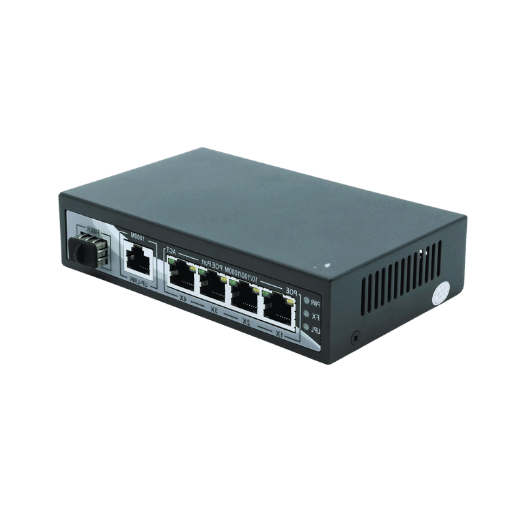
While assessing the PoE budget and power source of a 4-port PoE switch, assess the total power needs of your linked devices. Determine the power requirements for all of the devices to ensure the switch’s total PoE budget can accommodate the collective demand. Ensure the maximum power output per port is compatible with higher-powered peripheral devices, for example, IP cameras or access points. Also, make sure the power supply unit (PSU) that comes with the switch is capable of meeting these needs to operate efficiently and reliably. For more power-demanding devices, ensure the switches are designed to offer higher PoE standards like PoE+ or PoE++.
Make sure that when you analyze SFP ports and uplink requirements of your network, focus on not having bandwidth restrictions. SFP ports provide flexibility for connecting to fiber or copper links, making them suitable for long-haul connections, high-speed uplinks, and long-distance connections. It is advisable to choose transceivers that are in line with your switch model, and ensure that uplink speeds do not exceed the traffic volume, which could lead to congestion. Heavy-duty uplinks (10 Gbps or even 25 Gbps) are recommended for networks where data transfer needs are high, especially in enterprise and data center environments. The proper configuration of link aggregation should be ensured if multiple uplinks are added to boost performance while maintaining reliability.
IEEE standards maintain interoperability and reliability in networks by setting rules concerning devices and protocols for a given network region. For example, the Ethernet standard IEEE 802.3 specifies the physical and data link layers for wired connections. Wireless Local Area Networks (WLANs) are governed by IEEE 802.11. Compliance with these standards is vital when acquiring networking devices to ensure integration and performance in the network. Confirm that all devices within the network operate under similar applicable IEEE standards to mitigate problems of incompatibility.
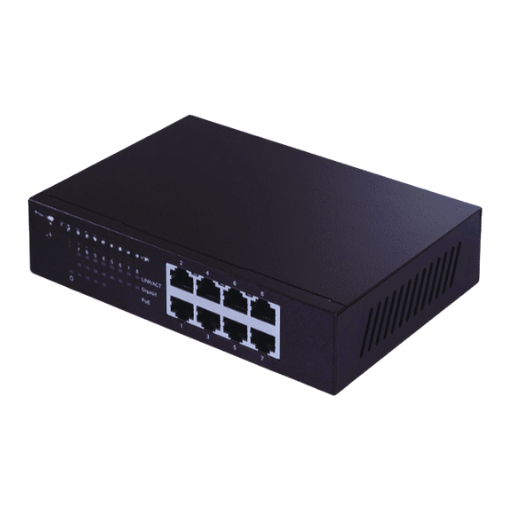
A 4-Port Gigabit PoE Switch is a particular type of network switch that delivers Power over Ethernet (PoE) functionalities to a maximum of four devices. It provides gigabit-level throughput meaning that data transfers of a thousand Megabits per second are possible on each port.
A: The 4-Port Gigabit PoE Switch makes network configurations very simple by integrating power supply and data communication for IP CCTV systems, Voice over Internet Protocol (VoIP) telephones and access points through one Ethernet cable. This streamlined approach reduces physical wiring and power supply clutter for PoE-compatible devices.
A: Key features of a Gigabit PoE Switch consist of both requirements for IEEE 802.3at and 802.3af PoE standards, the ability to pass data at gigabit speeds, a defined power budget to PoE units, a serving uplink port to other networks and sometimes extra like 2 SFP ports for fiber optic connection ports.
A: A 4-Port Gigabit PoE Switch can connect to non-PoE devices, yes. For devices that do not utilize Power over Ethernet (PoE), the switch will simply provide data transfer and no power. In this case, it will work as a standard gigabit network switch.
A: Typical features of a managed PoE switch include traffic control, VLAN configuration, and QoS prioritization, giving the user more authority over the network. An unmanaged PoE switch is, however, simpler. It does not require any configuration and is ready to use out of the box.
A: The 4-Port Gigabit PoE Switch is powered using an external power adapter. Each power adapter comes with a specific power output for the switch in addition to all PoE devices connected. Certain switches may also be powered through PoE by using an uplink port connected to a different PoE switch.
A: Yes. A network can be further reached by using a 4-Port Gigabit PoE Switch to connect other switches or network devices through the uplink port, which makes integration with a fully scaled network infrastructure simple.
A: The requirements such as number of ports, PoE power budget and support of the set standards (802.3at or 802.3af) as well whether it is a managed or unmanaged switch and any other ports such as SFP for fiber connections should be considered when purchasing a Gigabit PoE Switch.
A: A well-crafted 4-Port Gigabit PoE Switch should be able to retain 1000Mbps on all ports simultaneously, provided there is sufficient power and bandwidth to the switch for streamlining the data traffic requirements.
A: The PoE switch’s metal housing helps with overcoming the challenges of overheating, maintaining optimal performance, and prolonging the lifespan of the switch in the most demanding of industrial settings, while also providing a degree of impact resistance.
1. The Minimum Scale of a 4-Port Switch Redundancy Network
Insights:
Methods Employed:
2. The Scalable Two-Mode 3-Port and 4-Port Mode Insensitive Silicon Photonic Switches
Highlights:
How it was Done:
3. A DC-to-12GHz 4×8 Switch Matrix with 1.4–2.5 dB IL and Three-Port Reconfigurable Inter-Stage Matching Network
Key Findings:
Methodology: